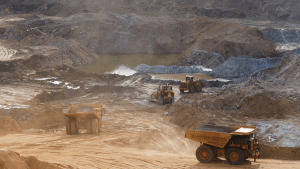Rescue efforts continue after deadly earthquake in Afghanistan

Rescue teams continue to search for survivors amongst the rubble of homes destroyed by a severe earthquake that struck eastern Afghanistan on August 31st, as reported by The National on September 2nd.
The 6.0‑magnitude tremor, followed by at least five aftershocks, struck remote parts of mountainous provinces near the Pakistan border. On September 1st the death toll was over 800, while 2,500 had reportedly suffered injuries. The number of deaths has now reached 1,400.
The earthquake was so strong buildings from Kabul to Islamabad in Pakistan were shaken. The the US Geological Survey (USGS) has said over 1.2 million people are likely to have felt strong or highly strong shaking.

Ehsanullah Ehsan, head of the Kunar Provincial Disaster Management Authority, reported that search operations “continued throughout the night,” although many injured in distant villages still require hospital treatment. Villagers have joined the efforts, clearing debris by hand and burying victims—some identified as children—wrapped in white shrouds.
The quake’s epicentre was approximately 27 km northeast of Jalalabad, at a shallow depth of eight kilometres, conditions that typically cause widespread damage. Some roads leading to affected villages remain blocked.
This disaster compounds Afghanistan’s long-standing humanitarian challenges. Foreign aid has significantly dropped since the Taliban took power in 2021, affecting the country’s ability to respond to emergencies. In June, the UN reported the “deepest funding cuts ever” affecting global humanitarian aid plans.
But international assistance is beginning to arrive. On September 1st, the UAE dispatched search-and-rescue teams, along with supplies such as food, medicine, and tents. UN Secretary-General António Guterres on September 1st announced an initial $5 million in emergency support and pledged further mobilisation.
This disaster adds further pressure to Afghanistan’s already fragile state, with the World Food Programme issuing a sharp warning over a surge in child malnutrition in the country, in which one in three children are stunted. The spike is attributed to a steep decline in emergency food aid. The crisis poses severe long-term health risks for Afghanistan’s youngest population.
According to Ijaz Ulhaq Yaad, many of those affected by the earthquake were Afghans who had recently returned from Iran and Pakistan. Afghan immigrants who were relocated to the UAE were also later sent back to Afghanistan, signifying a lack of security within regional support offered to Afghanistan.
The National, Maghrebi.org
Want to chase the pulse of North Africa?
Subscribe to receive our FREE weekly PDF magazine














